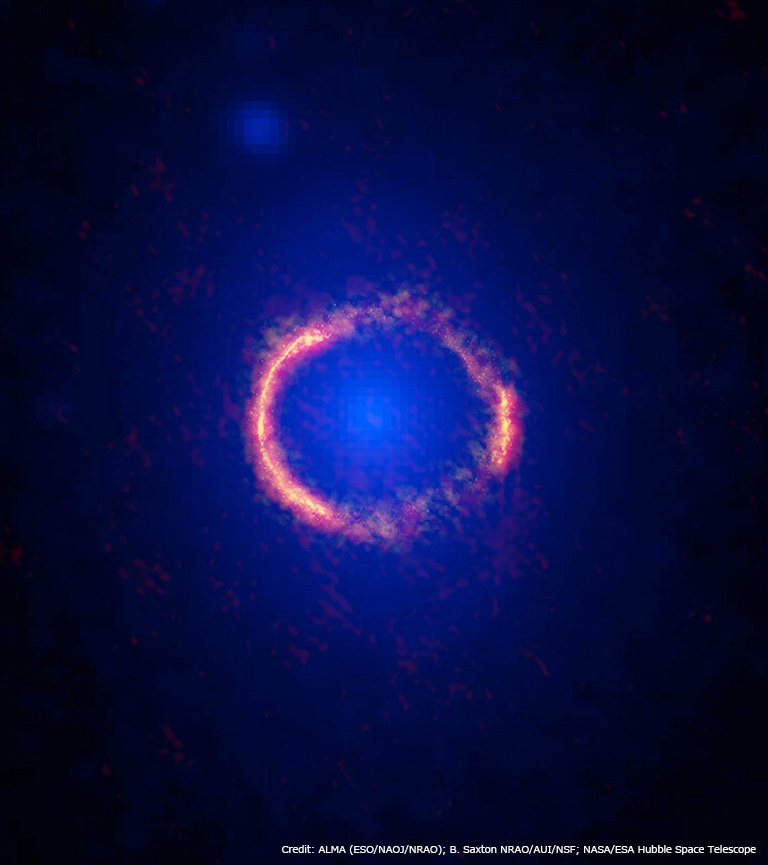Unprecedented views of lensed galaxy and asteroid Juno taken with ALMA
| Science
Astronomers obtained unprecedentedly sharp images of a distant galaxy SDP.81 and an asteroid Juno with the Atacama Large Millimeter/submillimeter Array (ALMA). These images were taken in October 2014 as part of ALMA’s Long Baseline Campaign, an essential program to test and verify the telescope’s highest resolving power, achieved when the antennas are at their greatest separation: up to 15 kilometers apart. The resolution of the images are has high as 0.023 arcseconds, and the images prove that ALMA is a very powerful tool for studying various targets, including nearby objects in our solar system and distant galaxies billions of light-years away.
“It takes a combination of ALMA’s high resolution and high sensitivity to unlock these otherwise hidden details of the Universe,” said ALMA Director Pierre Cox.

For details, see Unprecedented views of lensed galaxy and asteroid Juno taken with ALMA.
Link
This article is including a link to a article for kids.
Cosmic Lens Zooms in on Warped Galaxy Printer-friendly
 Space Scoop | UNAWE
Space Scoop | UNAWE
The Universe Awareness website provides children through the world with fun, easy to understand news and educational materials about the Universe. These help kids understand the size and beauty of the Universe. The “Space Scoop” section of Universe Awareness contains articles written for kids explaining current astronomy news. A Space Scoop is available for this article.